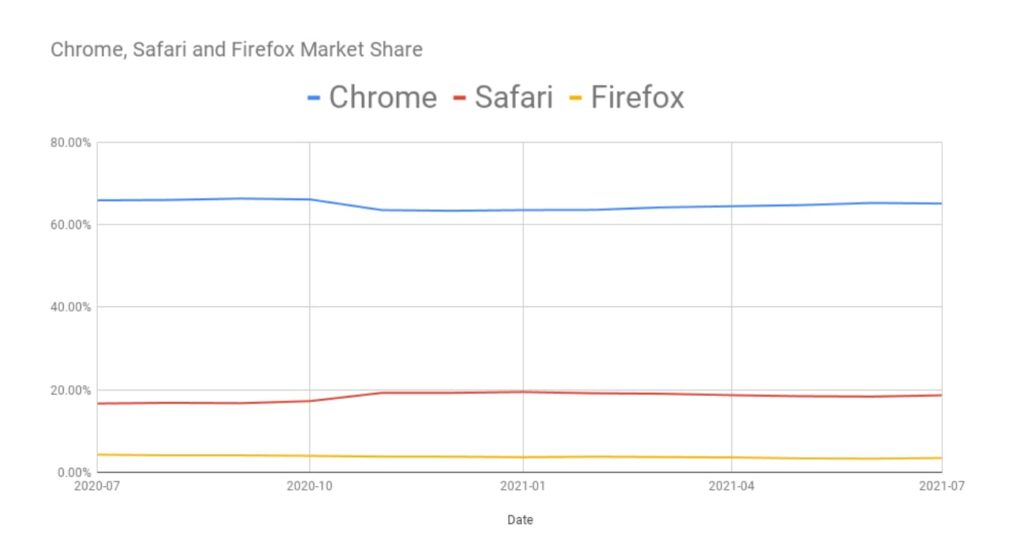Preparing for the Third Party Cookie Apocalypse – Guest Post
By Bedrock 42 • Last updated: Monday Feb 12th, 2024

Why You Should Be Preparing
Third-Party Cookies are a way for advertisers to assign you a unique identifier, or online fingerprint, allowing them to follow you as you browse through different websites online.
An example of this might be when you’re looking to book a holiday on a travel website but decide not to book yet. They can then serve you adverts for holidays on other websites or social media platforms.
Advertisers will even tailor these adverts based on the destinations and hotels you were looking for.
You may have had that funny feeling your devices are watching you, and this technology is at the forefront of that.
This has created quite a bit of concern around our online privacy, and recently Google announced it is taking steps towards protecting users’ personal data by no longer supporting these cookies.
It’s well known that modern browsers like Safari, Firefox, & Brave have promoted blocking Third-Party Cookies for years as a feature for protecting your online privacy from bad actors.
But recently, Google announced a new similar initiative, The Privacy Sandbox. This initiative will bring a new evolution to how Chrome browsers deal with your personal information and how we serve relevant ads to individual customers without the use of third-party cookies.
So why is the disappearance of third-party cookies in Chrome such a big deal now?

Safari and Firefox have had less than a 20% share of the market, according to GlobalStats data, and Chrome made up 65% of internet use over the last year. With such a large share of online users, this initiative will have enormous implications for most businesses using third-party tracking on browsers to improve their targeted ads.
This change does not mean Google Ads will no longer track and target its users. They have already moved to use first-party cookies for their data collection to make it more privacy focused.
That being said, Chrome privacy developers will continue to think of new ways to serve the most relevant ads to consumers. That leaves us with the other advertising platforms that rely on third-party, these changes will be cause to find a new way of targeting users.
You should expect popular marketing channels like social advertising, affiliate marketing, and search engines that aren’t Google to change their technology to keep up with this in the next two years.
What Will Replace Third-Party Cookies
Contextual Advertising
Platforms already have the option to place advertising based on which site a customer is on and the site’s content, and this will become a much more prevalent tactic.
Contextual advertising removes the need for collecting information around the customers browsing habits. For example, on ‘Runners Weekly’, advertising running shoes or supplements would go down well.
Serving these ads is done by scanning the text on a page and selecting an advert to display based on phrases or keywords.
This will become even more accurate with the introduction of AI trained to analyse additional target content like images, videos, audio and language, allowing a stronger page-level relevance to serving ads.
People-Based Targeting
With the popularity of mobile browsing increasing exponentially over the last decade, an emerging marketing tactic has been tracking users across multiple devices. Cross-device tracking has been a struggle to implement for a long time, you can only use personal information to link a user across devices, like email addresses or phone numbers. People-based targeting will also rely on this to follow users’ accounts across websites in place of cookies.
Using email and phone data to pinpoint a user through your campaign is already possible with Facebook. It enhances the attribution of social media marketing while preventing wasted spend on existing customers that have already converted. However, this method is more geared towards larger platforms where those customers already have an existing account like Facebook, Instagram, Pinterest, and Amazon. The rising popularity of signing in to websites with your Facebook or Google account makes things a little easier for advertisers to do this sort of thing.
Consider how you might be able to leverage a login or a customer identifier to better target users.
First-Party Data Collection
Currently, many advertisers and analytics technologies still use third-party cookies, but some (like Google Ads) have made efforts to move their tracking to first-party already. Facebook has also made strides with the release of their new Conversion API, or ‘CAPI’, to improve data collection around conversions.
You can now send conversion data directly from your server to Facebook, instead of through a website pixel. This is more technically challenging, but can be done with minimal support from developers using Google Tag Manager Server-Side.
GTM Servers are a new solution for managing tracking tags without loading any additional scripts on the customer’s device. Instead, websites send tracking data to a dedicated Google Tag Manager server which exists on a subdomain.
When data is received by the dedicated server, it forwards this on to platforms like Facebook using CAPI. Because this is handled outside of the user’s browser, on a server in your own domain space, no third-party cookies are created or even needed.
Facebook will not be affected much by the Privacy Sandbox but it will give more control to the site administrators in the data they choose to send to Facebook, further securing the privacy of their customers.
First-party and server-side solutions will be something third-party platforms move towards to tackle the gaps opening up in their platforms’ data, but may not be provided until closer to the release.
Making The Transition Away from Third-Party
The first step in preparation is a full site audit with your developers to understand the third-party vendors that push cookies onto the customer’s browser. These will most likely be advertising and analytics platforms that you use for marketing and reporting purposes. From here, you can begin researching the impact this update will have, or contact support teams for more information around this.
The best solution we have found to prepare is to move towards a Server-Side tag management solution, making it easier to move tracking from third-party to first-party without a complete overhaul. With this solution not only do you make your website faster by running less tracking code in the browser, you also have much more control over how information is collected about your customers.
The move to first-party cookies is currently the best way to combat the looming update to Google chrome. Collecting, storing and using first-party data is a more mutual method of collecting insights on your customers that have the opportunity to consent. Companies that have already phased out third-party cookie use will be ahead of the panic.
If you would like to find out more about the transition away from third-party cookies, or learn about other technical marketing topics, please email [email protected] or contact us on our website www.bedrock42.com for a free site audit.
See how Salesfire can help you optimise your product discovery experience, email one of our experts at [email protected] or book a free demo of our personalisation tools.



